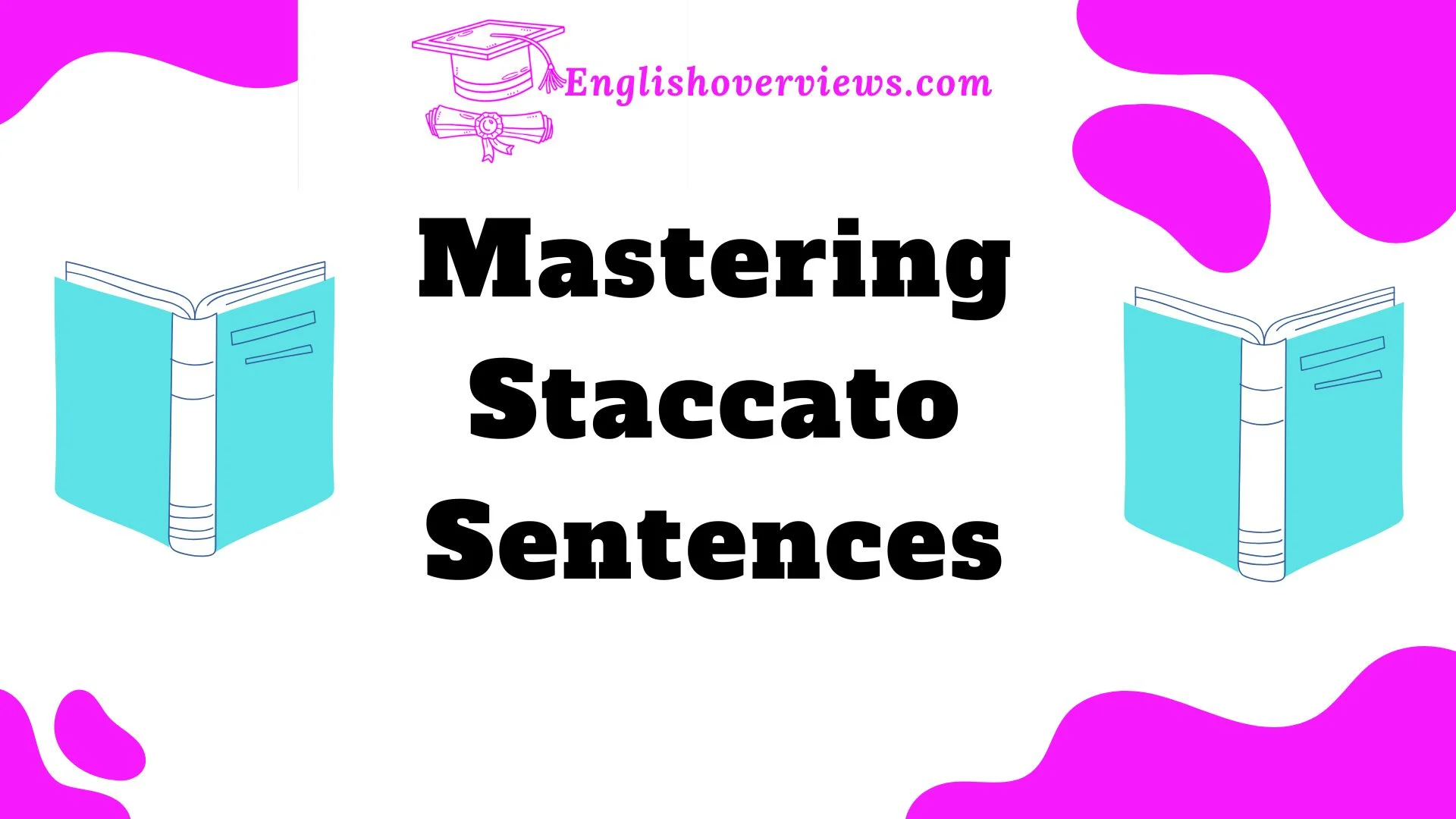Writing is both an art and a science. The way we structure sentences can completely change how readers engage with our words. One often-overlooked yet highly effective technique is the use of staccato sentences. These short, punchy sentences can create clarity, drama, or emphasis when used correctly. But what exactly are staccato sentences, and why should writers care about them?
This guide dives deep into the mechanics and artistry of staccato sentences. Whether you’re a novelist, journalist, poet, or content writer, mastering this skill can enhance your writing’s impact. We’ll explore definitions, techniques, real-world examples, and practical tips. By the end, you’ll have a clear understanding of how to use staccato sentences to captivate your audience. Let’s begin!
What Are Staccato Sentences?
Definition and Characteristics
A staccato sentence is a short, concise sentence-often fewer than eight words-that delivers a single, impactful idea. Its brevity mirrors its namesake from music, where “staccato” refers to short, detached notes.
Key features of staccato sentences:
- Brevity: Rarely more than a few words.
- Clarity: Focuses on one idea at a time.
- Impact: Creates emphasis or urgency.
- Rhythm: Adds variation to text flow.
For example:
- She froze. The silence echoed.
- He ran. Faster. Desperate.
The Power of Staccato Sentences in Writing
Enhancing Readability
Short sentences break up dense text, making it easier to read. In today’s fast-paced world, many readers prefer content that flows quickly. Imagine slogging through a wall of text versus enjoying a balanced rhythm of short and long sentences.
Example:
Without staccato sentences:
The storm raged on for hours, its fury unabated, tearing through everything in its path with relentless force, leaving destruction in its wake.
With staccato sentences:
The storm raged on. It was fierce. Nothing stood a chance.
The second version is easier to follow and more engaging.
Driving Emotional Impact
Staccato sentences can evoke strong emotions. They’re particularly effective in:
- Action scenes: “He jumped. The bomb exploded.”
- Emotional moments: “Her heart sank. He was gone.”
Short sentences mimic the way people think during intense situations-in fragments.
Techniques for Writing Staccato Sentences
Balancing Brevity with Flow
While staccato sentences can be impactful, overusing them can disrupt the flow. Balance is key. Pair them with longer, more complex sentences for a natural rhythm.
Example:
The room was silent. He listened. A creak. Was someone there?
Notice how the short sentences are interwoven with longer ones to maintain engagement.
Transitioning Between Sentence Types
Use transition words like “And then,” “Suddenly,” or “But” to connect staccato sentences seamlessly.
Applications Across Writing Styles
Prose
In prose, staccato sentences add tension and drama. They’re often used in:
- Thrillers: To heighten suspense.
- Dialogue: To mimic natural speech patterns.
Example from Literature:
In Ernest Hemingway’s The Old Man and the Sea:
“He was an old man who fished alone…He had gone eighty-four days now without taking a fish.”
The simple, short sentences establish the character’s solitude and struggle.
Poetry
In poetry, brevity creates rhythm and resonance. Poets like Emily Dickinson often used short lines for emphasis.
Example:
“I’m nobody! Who are you? Are you – Nobody – too?”
Dialogue
Staccato sentences make dialogue feel real. People rarely speak in long, flowing sentences, especially in heated moments.
Example:
“You knew?” “Yes.” “And you said nothing?” “I couldn’t.”
Literary Examples of Staccato Sentences
Famous Authors
Some renowned authors have mastered the use of staccato sentences:
- Hemingway: Known for his minimalist style.
- Raymond Carver: Created emotional depth with brevity.
- Cormac McCarthy: Used short sentences for gritty storytelling.
Comparative Analysis
Let’s compare:
| Traditional Sentence | Staccato Sentence |
| “The car sped away, leaving a trail of dust.” | “The car sped. Dust rose.” |
| “She considered her options, weighing the pros and cons.” | “She thought. Decided.” |
Common Missteps and How to Avoid Them
Overuse
Too many short sentences can feel jarring. Readers may lose interest if the text lacks variety.
Lack of Clarity
Poorly constructed staccato sentences can confuse readers. Always ensure they’re clear and purposeful.
Crafting Effective Sentence Fragments
When to Break the Rules
Sentence fragments can be effective but should be used sparingly. Ensure they contribute to the narrative or emotion.
Good Fragment:
“Alone. Completely alone.”
Bad Fragment:
“Was walking.”
The latter lacks clarity and purpose.
Integrating Staccato Sentences in Creative Writing
Fiction
Use short sentences in:
- Action scenes: “The door slammed. She ran.”
- Inner monologues: “Why? Why now?”
Nonfiction
In persuasive writing, staccato sentences emphasize key points. For instance:
- “Climate change is real. It’s urgent. Act now.”
Practical Tips for Using Staccato Sentences Sparingly
- Use them for emphasis. Reserve staccato sentences for critical moments.
- Balance is key. Pair short sentences with longer ones.
- Edit ruthlessly. Remove unnecessary staccato sentences.
- Read aloud. Ensure the flow feels natural.
FAQs
What is a staccato sentence?
A staccato sentence is a short, impactful sentence that delivers a single idea clearly and quickly.
Can I overuse staccato sentences?
Yes, overuse can make your writing feel choppy. Use them sparingly for maximum impact.
Are staccato sentences grammatically correct?
Most staccato sentences are, but some may break rules intentionally for artistic effect.
Where are staccato sentences most effective?
They’re best used in action scenes, emotional moments, or to emphasize critical points.
Conclusion
Mastering staccato sentences can elevate your writing, adding rhythm, clarity, and emotion. When used thoughtfully, they captivate readers and deliver powerful messages. Experiment with this technique, and watch your words come alive!

English Overviews is a resourceful website dedicated to providing valuable content related to grammar and vocabulary. Muhammad Haroon has made notable contributions, sharing insights on various subjects, including WordPress themes and plugins. The primary goal of the site is to help users improve their English language skills effectively.











